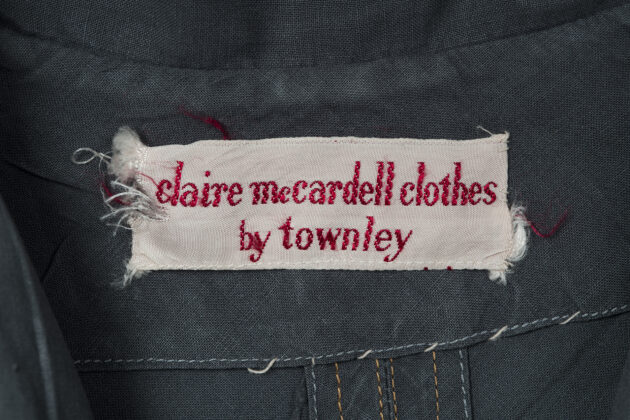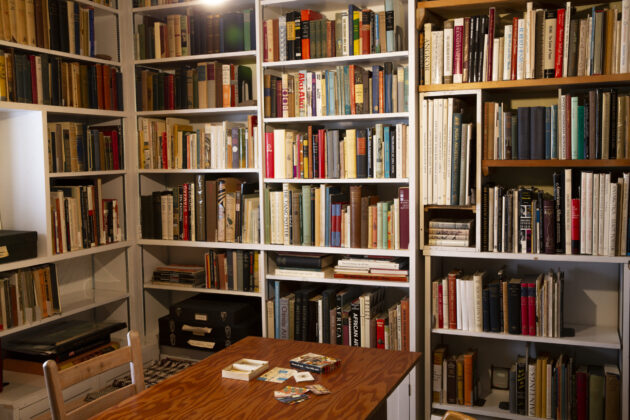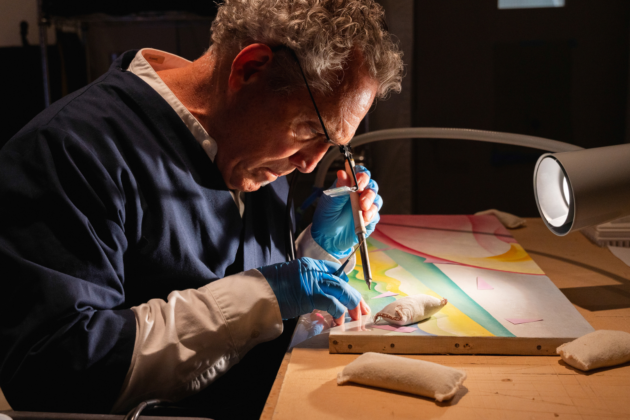
O’Keeffe’s Closet of Fashion Icons
For the first major project of this summer, my fellow interns and I have begun cataloging a significant portion of the Georgia O’Keeffe Museum’s collection of the artist’s tangible personal property. The segment of the collection we are currently examining is primarily made up of Ms. O’Keeffe’s clothing. Importantly the objects we are finding and researching have allowed us to make some interesting observations regarding Ms. O’Keeffe’s artistic aesthetic and its influence on her preferences in clothing.
One clothing label we have encountered several times and have begun to delve into is the Viennese tailor, Knize. Founded in 1858 by Czech garment maker Josef Knize, the brand has continuously maintained a presence as one of the foremost bespoke clothiers in the world. Knize became renowned in the twentieth century for its quality and favorable reputation among notable European families, many of whom continue to sport Knize suits as a display of their family’s legacy. The brand’s comfortable fit and successful advertising campaigns in the mid-twentieth century distinguished the clothier as one of the most sought after men’s fashion brands in the world. To this day, the tailors at the company’s storefront in Vienna use Italian and British fabrics to handcraft about one hundred suits per year. Each suit requires around 7,000 handmade stitches, in total costing approximately $6,900.
While Knize maintains an exclusive presence in Vienna today, it was once producing custom clothing and selling ready-made garments in cities around the world, including London, Paris, and New York. The New York store opened in 1941 and provided an outlet for the brand’s fine clothing, especially to Americans and recent Europeans who migrated to the United States after the outbreak of World War II. It remained open until the early 1970s.
We have documented several jackets, pants, and skirts with Knize labels in the collection of Ms. O’Keeffe. Made exclusively from black wool, the clothes highlight Knize’s influence on Ms. O’Keeffe’s formal wardrobe. The defining qualities of the brand’s clothing fit perfectly with her fashion aesthetic: comfortable, yet distinguished, and very well made. Indeed, Knize clothing was considered some of the finest of its day. Its unassuming,dignified style would have made it a staple of Ms. O’Keeffe’s formal wear. According to the custom labels we have found sewn into the garments, she periodically looked to Knize New York for her formal clothing from the mid-1950s through the late 1960s.
One of the most interesting dimensions to Ms. O’Keeffe’s preference for Knize is the fact that the company was best known as an outfitter for men’s formal wear at the time, not introducing a full line of ladies’ clothing until the early 1990s. The company even had a signature men’s fragrance, introduced in the 1920s, and marketed with distinctive logos aimed at cultivating a male customer base.
It is curious that Ms. O’Keeffe had such a strong preference for a clothing label that catered primarily to male tastes. One might look to another of Knize’s frequent customers for an explanation. Film star Marlene Dietrich was another woman who often bought clothing from Knize; she was often photographed wearing men’s suits and clothing. Her choice to sport men’s suits brought her feminine facial features and elegant curly hair into sharp relief against the masculine clothing.
While it is tempting to believe that Ms. O’Keeffe was striving for the same type of deliberate androgyny by keeping so many Knize items in her wardrobe, it is important to keep in mind her emphasis on aesthetics. She did not focus on the fact that the garments she wore were designed based on men’s fashion sensibilities, but on their appealing visual qualities, considering less on their gender connotations. It is an aesthetic principle analogous to the treatment of bones in her artwork. It is a common assumption that Ms. O’Keeffe’s paintings of bones and skulls are symbolic of death or mourning. However, she saw the bones and skulls as beautiful objects with visual qualities she strived to capture in her paintings. The same is true of her clothing choices, which she made based on visual appeal, despite their associations with gender. The idea is further illustrated by the inclusion of both women’s and men’s kimonos in her collection.
Ms. O’Keeffe’s affinity for Knize clothing, a company which existed as one of the foremost men’s brands in the world, speaks volumes to her unwavering focus on aesthetics. This is apparent not only in her artwork, but her personal style choices as well. Her sharpened aesthetic focus was so strong that she disregarded culturally engrained gender norms that often accompany one’s clothing choices. Ms. O’Keeffe’s fashion thus stands as an excellent demonstration of how the artist valued aesthetic appeal and visual beauty over all else when expressing herself, whether through art, personal style, or design.
This post was written by Patrick Gora, Registrar Intern, Georgia O’Keeffe Museum.
Featured image: Knize jacket from O’Keeffe’s wardrobe in the collection of the Georgia O’Keeffe Museum.


